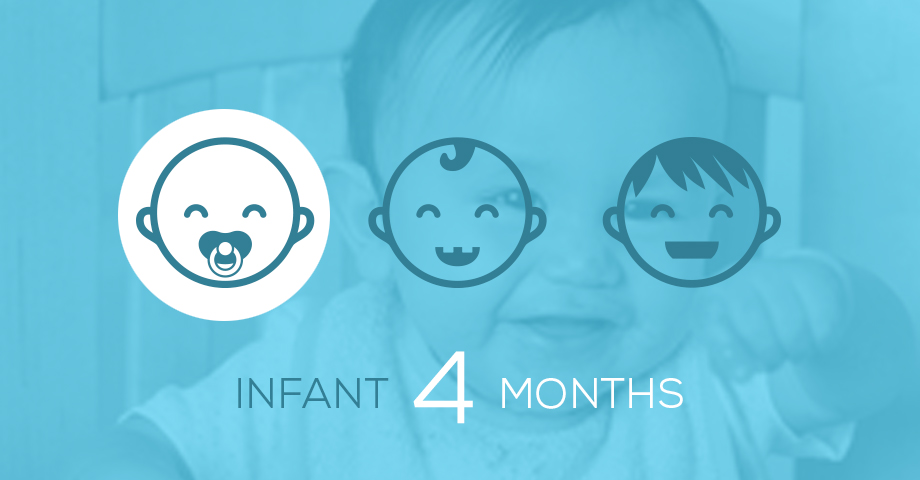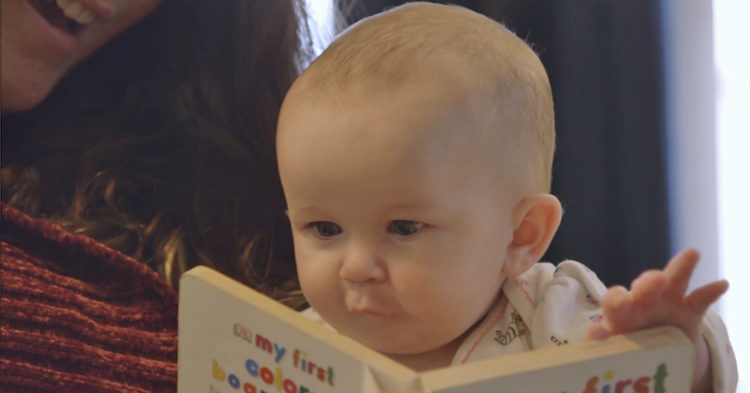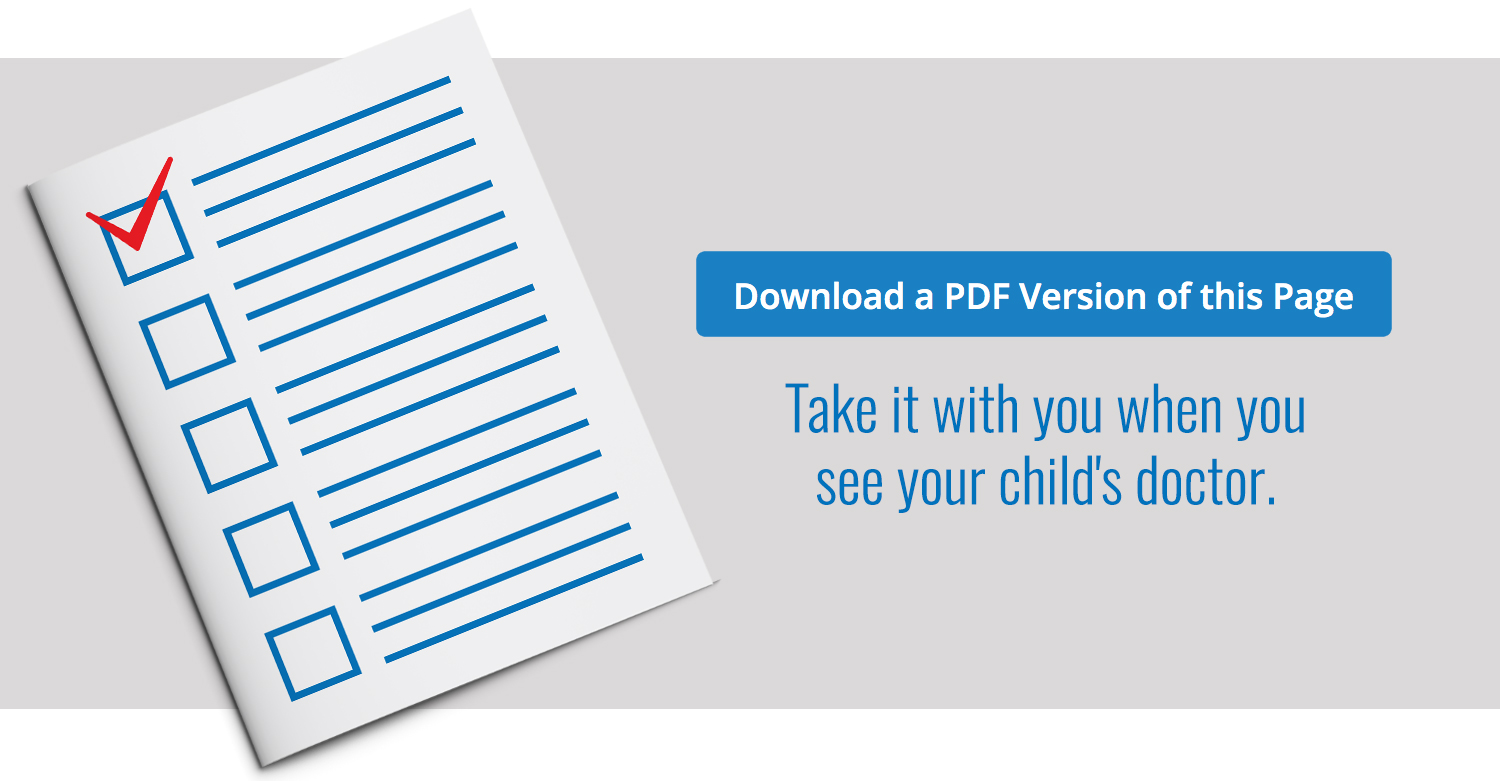
How your child plays, learns, speaks, acts and moves offers important clues about your child’s development. Developmental milestones are the things most children (75% or more) can do by a certain age.
Check the milestones your child has reached by 4 months, and talk with your child’s doctor at every visit about the milestones your child has reached and what to expect next.

What Most Babies Do at This Age:
Social / Emotional
- Smiles on his own to get your attention
- Chuckles (not yet a full laugh) when you try to make her laugh
- Looks at you, moves, or makes sounds to get or keep your attention
Language / Communication
- Makes sounds like “oooo”, “aahh” (cooing)
- Makes sounds back when you talk to him
- Turns head towards the sound of your voice
Cognitive (learning, thinking, problem-solving)
- If hungry, opens mouth when she sees breast or bottle
- Looks at his hands with interest
Movement / Physical Development
-
Holds head steady without support when you are holding her
-
Holds a toy when you put it in his hand
-
Uses her arm to swing at toys
-
Brings hands to mouth
-
Pushes up onto elbows/forearms when on tummy
Other Important Things to Share with the Doctor |
||
|
||
Concerned about your child’s development?
You know your child best. Don’t wait. If your child is not meeting one or more milestones, has lost skills he or she once had, or you have other concerns, act early. Talk with your child’s doctor, share your concerns, and ask about developmental screening.
If you or the doctor are still concerned:
- Ask for a referral to a specialist who can evaluate your child more; and
- Call your state or territory’s early intervention program to find out if your child can get services to help. Learn more and find the number at cdc.gov/FindEI.
For more on how to help your child, visit cdc.gov/Concerned.
Help Your Baby Learn and Grow.
As your baby’s first teacher, you can help his or her learning and brain development. Try these simple tips and activities in a safe way. Talk with your baby’s doctor and teachers if you have questions or for more ideas on how to help your baby’s development.
- Respond positively to your baby. Act excited, smile, and talk to him when he makes sounds. This teaches him to take turns “talking” back and forth in conversation.
- Provide safe opportunities for your baby to reach for toys, kick at toys and explore what is around her. For example, put her on a blanket with safe toys.
- Allow your baby to put safe things in his mouth to explore them. This is how babies learn. For example, let him see, hear, and touch things that are not sharp, hot, or small enough to choke on
- Talk, read, and sing to your baby. This will help her learn to speak and understand words later.
- Limit screen time (TV, phones, tablets, etc.) to video calling with loved ones. Screen time is not recommended for children younger than 2 years of age. Babies learn by talking, playing, and interacting with others.
- Feed only breast milk or formula to your baby. Babies are not ready for other foods, water or other drinks for about the first 6 months of life.
- Give your baby safe toys to play with that are easy to hold, like rattles or cloth books with colorful pictures for her age.
- Let your baby have time to move and interact with people and objects throughout the day. Try not to keep your baby in swings, strollers, or bouncy seats for too long.
- Set steady routines for sleeping and feeding.
- Lay your baby on her back and show her a bright-colored toy. Move the toy slowly from left to right and up and down to see if she watches how the toy moves.
- Sing and talk to your baby as you help her “exercise” (move her body) for a few minutes. Gently bend and move her arms and legs up and down.
Content provided by the Centers for Disease Control and Prevention’s “Learn the Signs. Act Early.” material and are not a substitute for a standardized, validated developmental screening tool.



